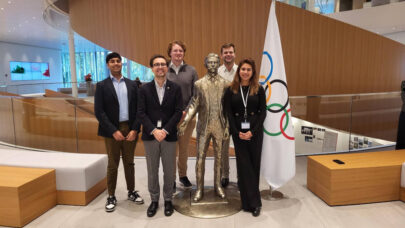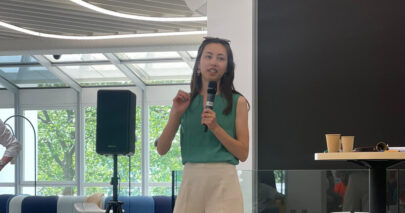
DBS was recognised by Harvard Business Review in 2019 as one of the Top 20 business transformations of the past decade. Tell us, what did you do differently from other traditional banks undergoing a digital transformation?
In 2009, DBS was a traditional bank that had a reputation for being slow, having poor customer service and average financial performance. Our subsequent transformation journey has been an iterative process and it is by looking back and talking to other banks that we have identified our three success drivers.
Firstly, we painted a vivid picture of the future and then we motivated our team to move towards it. By concentrating on the external environment to understand the macro changes, we quickly realised that digital transformation was more than just digitalising our services. We needed to create new business models through end-to-end digital thinking, which required business and technology teams to work more closely together.
The second dimension was breaking the challenges down into manageable chunks. A lot of people I spoke to just did not know where to begin with the huge task of digital transformation. We created what we called T-shaped transformations broadly encouraging the whole organisation to come along (the top of the T); and then focusing resources on specific areas where we needed success (the deep part of the T).
Finally, and most importantly, we created a climate for change. We expected resistance but made a conscious decision to bring the whole company along with us, rather than just a pocket of innovators. We had to give our employees the creative confidence to embrace change and feel empowered to take the initiative.
We ran 250 Process Improvement Events (PIEs), where cross-functional teams would come together to map out the end-to-end process and completely reinvent it. Teams then presented their proposed changes to their bosses directly. Historically, such suggestions may have been ignored but bringing managers into the room brought almost complete buy-in.
We then made changes by the end of each week – which helped employees feel energised and empowered. We put in place “the customer hour” as an iconic measure of the customer’s waiting time taken out of the system. In those first few years, we took out 250 million customer hours on an annual basis, taking us from the bottom to the top of customer satisfaction scores within a year in Singapore.
Everybody could contribute, see an improvement, and take the creative confidence into future initiatives.
Did you hire external consultants or was it driven from the inside?
It was a very organic process. We used the idea of culture by design and focused on specific behaviours. We identified the culture we wanted to achieve very precisely, as well as the potential to achieving it and finally the rituals we could put in place to overcome them.
We wrote a book called “Eat, Sleep, Innovate” specifically to test this idea at scale. It applies behavioural science to the corporate workspace. One of the secrets of our journey was having our own internal transformation teams as a secret weapon, rather than needing to bring in consultants each time.
Incumbent banks have the advantage of established customer relationships and historical data on client behaviour, while most neobanks have not yet developed profitable business models. What is the extent of the disruption to traditional banks? Do neobanks have a future?
Neobanks – or digital banks – have set a new bar in terms of the expectations for customer experience. Traditional banks now need to provide the same service levels. At the same time, digital banks will need to win the trust of consumers if they are to entrust their wealth with them. Over time, some digital banks will earn that trust, so legacy banks cannot afford to be complacent.
In Singapore, the regulator has issued licences to some digital bank players and at DBS we take them very seriously. It’s good news for customers as it raises the game in the industry.
We discussed the trust that neobanks need to gain from customers to attract large deposits. Do you think this is a matter of having a banking licence and guaranteed deposit scheme, or is there something beyond that?
Like during the global financial crisis, when a big failure inevitably occurs everybody will become much more sensitised to where their money is. Trust is the differentiator for banks, but there are at least three dimensions to it. We discussed money being safe with an institution. However, there is also trust built on expertise and having the comfort that you are applying that expertise to be able to do the right thing for me.
How should traditional banks adapt business models in response to new entrants disrupting profitable business lines by offering more efficient services, digitally and at a lower cost?
To be prepared for any competitive attack, you need to be able to adapt very quickly. For us, it is all about making the time to market for new ideas. This comes down to testing and learning things to see if customers like them or not, and having a culture of experimentation in which you expect your ideas to be wrong. This stands in contrast to a HIPPO culture, where the Highest Paid Person’s Opinion counts the most.
Most banks’ business models haven’t fundamentally changed over the past decades. They earn revenue from fees or from net-interest margin. In this period of zero interest rates, banks are going to be very hard pressed to get revenue from their existing sources and will need to focus on new business models and revenue streams.
Early-stage Fintechs can grow fast, falling outside of heavy legislation that has a strong effect on established banks. In addition, the modularisation of banking through open banking and banking as a service opens up opportunities for Fintechs to provide services off the back of an established bank’s licence. How do we find the right balance between regulation and innovation and how important will it be to have a banking licence in financial services going forward?
In Singapore, we are very fortunate to be regulated by the Monetary Authority of Singapore. They have a very measured view on this question. They take great care to create a level playing field for incumbent banks and new entrants. They encourage innovation and they have many schemes in place to attract Fintech start-ups to operate in Singapore.
They offer them not just money, but sandboxes and access to the regulators too. Once Fintechs get to a certain size, they must operate according to regulations. It is difficult to become a bank. The balance between innovation and regulation has implications and must be well thought through by regulators. Progressive regulators have learned lessons from other markets and are putting controls in place.
Interview conducted by Stephanie Hurry, Olabisi Ayodeji, Matteo Conti and Emon Goswami
This is the 12th edition of Fintech Chain Mail. The full series can be accessed here.


